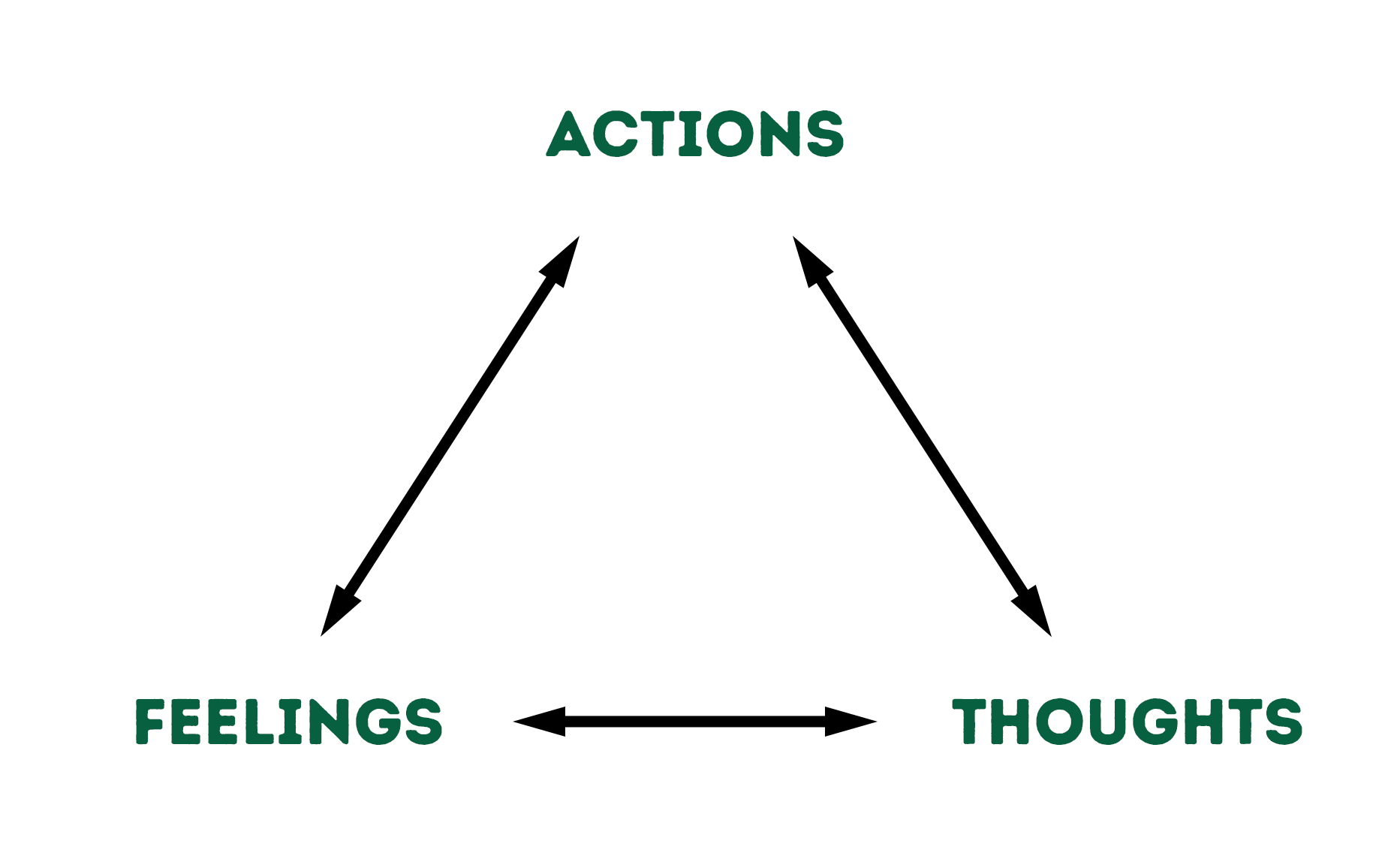Target Workplace Foundation Skills
Purpose
This is to use in the lesson
This lesson provides an introduction to the concept of how an individual’s actions, thoughts, and feelings are connected and demonstrates the importance of recognizing how they can be linked to positive workplace outcomes.
Review
This is to use in the lesson
Ask students to name the four workplace skills, briefly describe a workplace situation that demonstrates each skill, and give a personal example of each bullet point. Tell them that this lesson will focus on the foundational skill of Taking Responsibility. Ask them for examples of taking responsibility from the Strive video and whether they identified the most important workplace skill in their current setting.
Learning Outcomes
This is to use in the lesson
Students will:
- Understand the differences between actions, thoughts, and feelings.
- Be able to identify different actions, thoughts, and feelings depending on different scenarios.
- Demonstrate two examples of each from their own experiences.
Teaching Strategies
This is for you
- Mention that actions, thoughts, and feelings are all connected and interact with one another (presented in the ATF triangle)
- Hold students accountable for reporting back to the large group about what actions, thoughts and feelings they saw.
Required Materials
This is to use in the lesson
- Flip Chart
- Display list of workplace skills
- Display actions, thoughts, feelings and triangle
- Activity (2.1)
ATF Triangle: actions, thoughts, and feelings interact with each other. It is important to be aware of how your actions, thoughts, and feelings interact.

Vocabulary
This is for you
Activity 2.1: What Are the Connections between Actions, Thoughts, and Feelings?
Activity 2.1 allows students to understand the difference between actions, thoughts, and feelings, and allows them to explore how their own experiences are shared with individuals in the Strive video.
ATF Triangle: Actions, thoughts, and feelings all interact with each other. It is important to be aware of how your actions, thoughts, and feelings interact.
- Pair students and instruct them to work on the “fill in the blank” worksheet (Handout 2.1)
- Have each team report two of their answers on the worksheet and explain why their answer was connected with the situation on the worksheet.
- Using the students’ answers, discuss how the connection of actions, thoughts, and feelings affect an individual at work.
Handout 2.1
It is a very stressful day at work. Things need to be finished, and there are not enough people to help. Your manager demands that you stop what you are doing and help her.
|
Actions
|
Thoughts
|
Feelings
|
|---|---|---|
| Why is my manager yelling at me for doing my job? | You feel frustrated that your manager is interrupting your work because your manager feels that another task is more important. |
Your coworker begins to yell at you for being late. He didn’t know you already told the manager that you would be late. Without asking why you were late, he continues to say things about your tardiness.
|
Actions
|
Thoughts
|
Feelings
|
|---|---|---|
| Say, “Back off!” Turn your back on your coworker and get to work. | You feel frustrated and annoyed that your coworker was harassing you for being late without knowing why. |
You walked into work, and your manager told you, “Hey, thanks for all of your hard work lately, it’s been crazy around here, and you have really helped us out. Today is going to be another busy day, so get ready!”
|
Actions
|
Thoughts
|
Feelings
|
|---|---|---|
| You feel proud of yourself. You didn’t think your manager noticed, and that was nice. |
You are explaining to your manager that you need some time off “because of a thing.” The time off is for a personal reason (for example, a meeting with your parole officer, a court hearing, or an interview for another job), and you would rather not give details for that reason.
|
Actions
|
Thoughts
|
Feelings
|
|---|---|---|
| You lie to your manager and give a fake reason why you need to miss work | You feel bad because you are not telling the truth but feel there is no other option. |
You are fired from your job because you came to work late too many times.
|
Actions
|
Thoughts
|
Feelings
|
|---|---|---|
| You say “whatever” to your manager for not understanding, then leave. | You understand that your manager has a reason to fire you. |
Resource: Explaining the Brain to Children and Adolescents
Check for Understanding
This is to use in the lesson
- Ask students how the ATF model fits within the taking responsibility workplace foundation skill (e.g., your anger keeps you from making good relationships at work).
- Ask students which action, thoughts, or feelings affect their work the most.
- Think about a situation when you had a conflict with another person.
- What were your thoughts and feelings at the beginning of the situation?
- What were your thoughts and feelings as the situation developed?
Practice Activity
Ask students to pay attention to how actions, thoughts, and feelings interact with each other after they leave the classroom. Tell them that they will be asked to share a real-life example when they return to the next class meeting.
